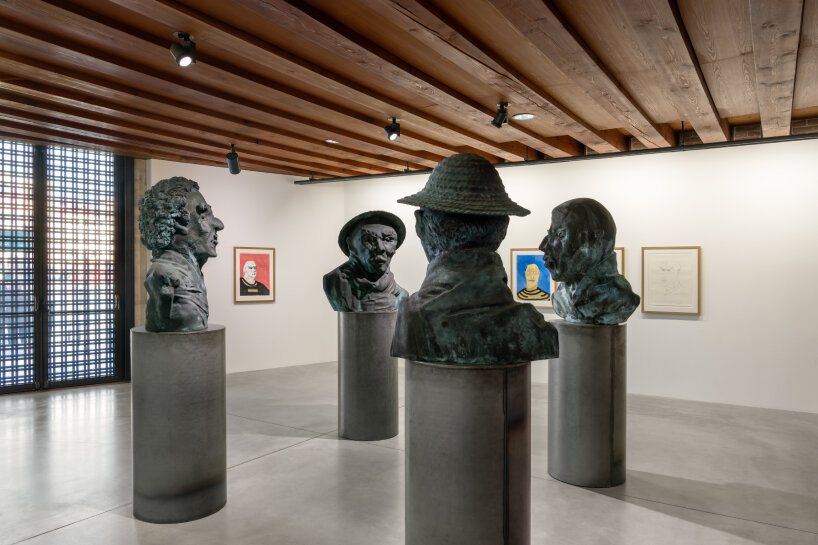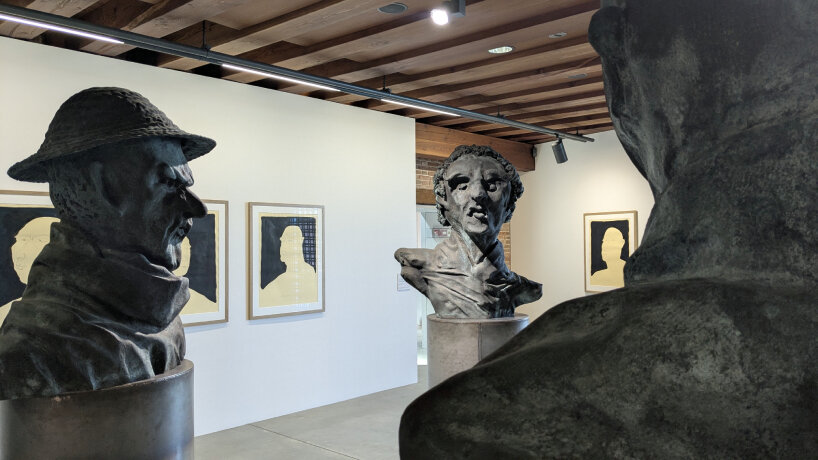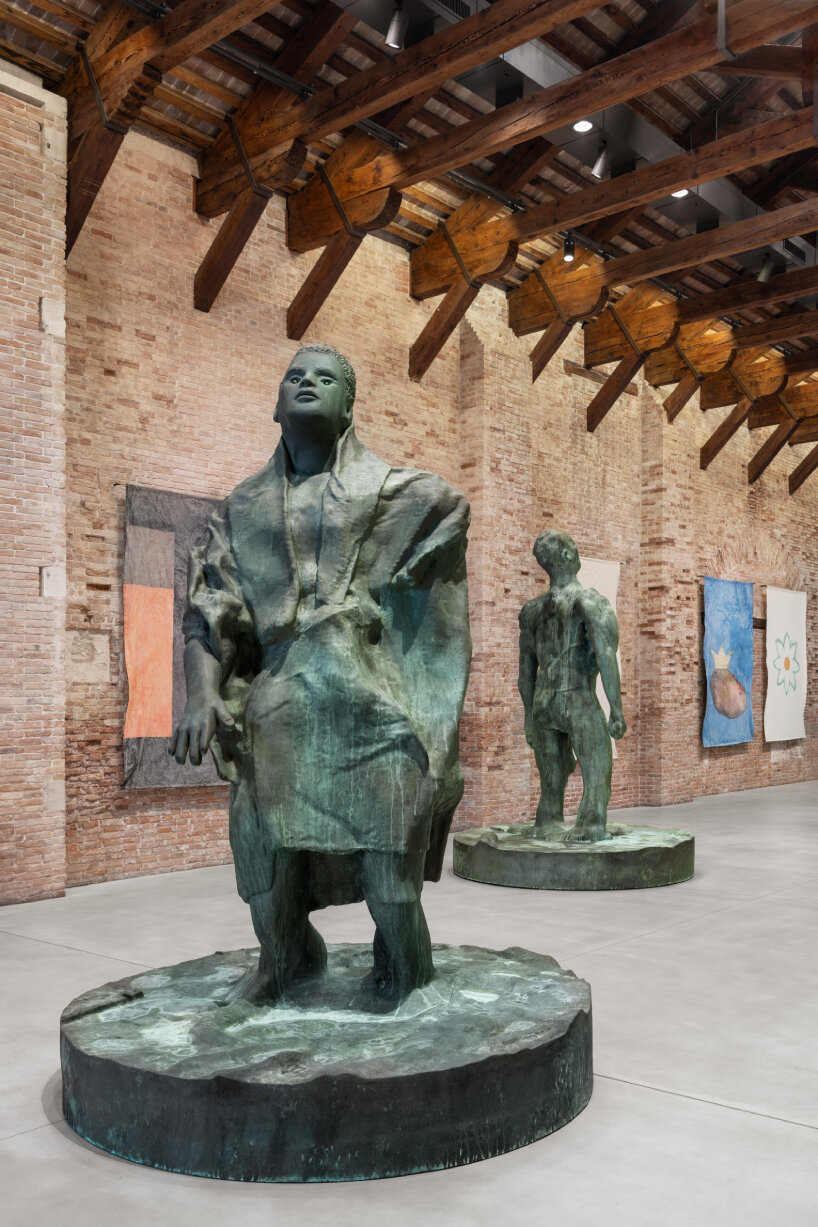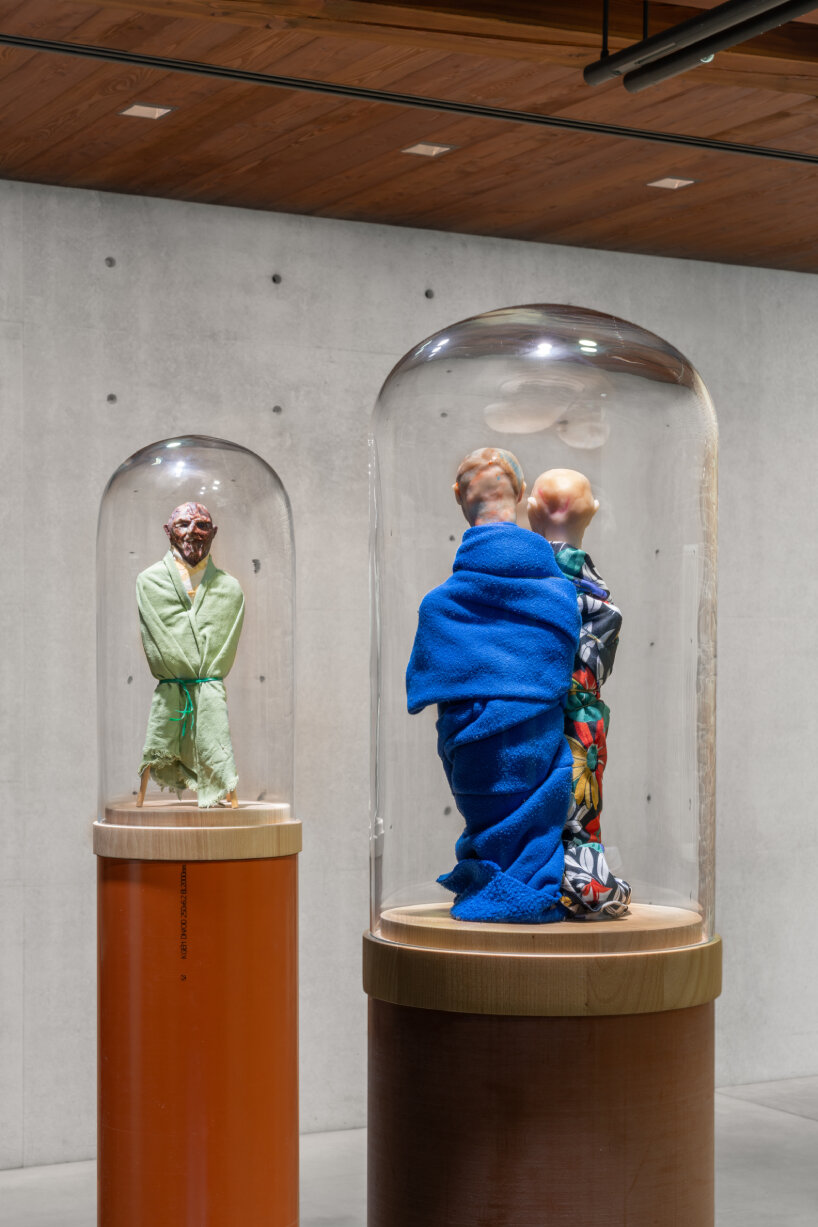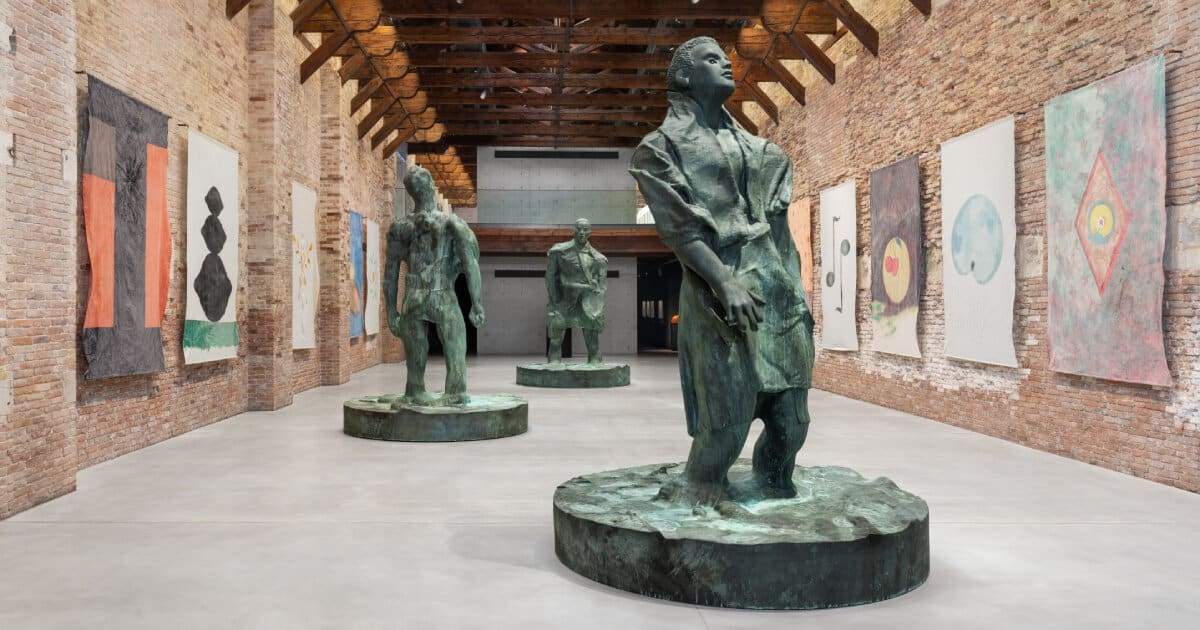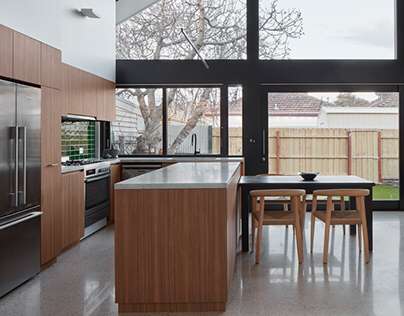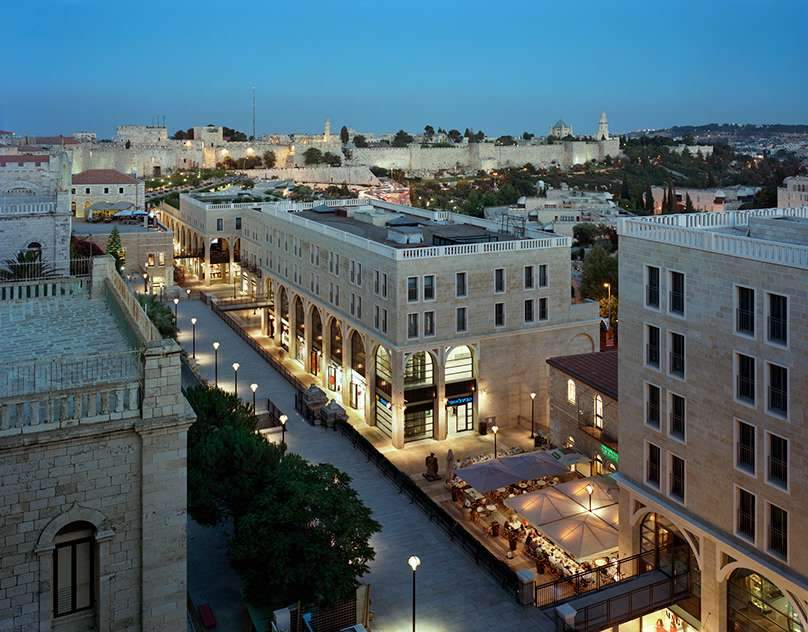Thomas Schütte Exhibition in Venice: A Journey into the Depths of Humanity
Among the distinguished exhibitions taking place in Venice this year is “Ancestry,” the first-ever solo exhibition by artist Thomas Schütte in Italy. Held at Punta Della Dogana, the exhibition will run from April 6 to November 23, 2025. It will showcase a collection of works that take visitors on a journey through complex expressions of humanity and its suffering.
The First Sculptures: Confronting the Clay
As you enter the exhibition, three colossal bronze sculptures greet you. They are part of a series titled “Mann im Wind” (2018). These statues depict men whose feet are stuck in a pool of clay. Their facial expressions convey distress as they struggle in turmoil. The exhausted bodies appear to retreat as they attempt to move forward, dressed in uniforms resembling those of soldiers. Despite the physical challenges they face, they do not fully give up.
Embodiment of Humanity: Life Through Art
These sculptures reflect complex human issues, such as the physical and psychological challenges one faces in life’s journey. They are not merely sculptures; they symbolize an ongoing struggle and perseverance. These works are part of a long-standing artistic approach by Thomas Schütte, who has been using these symbols since 1982.
Behind the Scenes: The Exhibition Through the Curators’ Eyes
The exhibition is curated by Camille Moreno, an independent curator, and Jean-Marie Gallais, curator of the Pinault Collection. Both have worked together to oversee the designs and arrangements inside the exhibition. It is located at Punta Della Dogana – Palazzo Grassi. Thomas Schütte did not attend the exhibition’s opening, but it was the sculptures that told the artist’s story and conveyed his vision of the world.
The Displayed Works: A Blend of Sculptures and Drawings
This exhibition serves as a bridge connecting the various facets of Thomas Schütte’s creativity. The exhibition presents over 50 sculptures from the Pinault Collection. Along with 150 drawings, where watercolours stand out as a primary expressive tool. Interestingly, many of these drawings have never been shown before, adding a new dimension to the artistic experience of the exhibition.
Human Figures as an Ongoing Artistic Essence in Thomas Schütte’s Works
In the “Ancestry” exhibition by Thomas Schütte in Venice, there is no fixed chronological order between the displayed works. Instead, the curators aim to trace the birth and evolution of the artist’s repertoire over time. In each room of the exhibition, the artworks change, but the caricatured human figures remain a constant focal point.
Tormented Faces: Embodying Pain and Tension
The caricatured sculptures that characterise Thomas Schütte’s works display faces exaggerated in expression, drooping excessively to appear highly emotional. These sad, wrinkled faces reflect a state of pain and tension, offering the viewer a deeply emotional artistic experience. Over time, these faces become a hallmark of the artist’s work. They reflect the experiences and thoughts of contemporary humanity. As visitors move through the exhibition, they explore how these works evolve. This makes human figures a central element for artistic understanding.
From “Mann Im Wind” to “Fratelli”: The Artist’s Themes Evolve
In one room, visitors encounter earlier works like Mann Im Wind (2018), where massive bronze sculptures address themes of human tension and suffering. In the next room, they follow with works like Fratelli (2012), a series of caricatured busts of male figures confronting each other. These pieces represent a period in which the artist lived in Rome in 1992. This was during a time of political upheaval in Italy.
The Human Experience in a Political and Social Context
Schütte’s sculptures represent more than mere caricatures of individuals. They embody human emotions within a specific social and political context. As visitors approach works like Fratelli, they are reminded of the time the artist spent at the German Academy in Villa Massimo during the political unrest in Italy. Through these works, the image of corrupt politicians on public transportation attempting to cover up their transgressions via the media is particularly evoked.
Styles and Human Representations: Satire Through Time
Schütte’s works capture specific patterns of human expression. They intertwine tensions and emotions with satirical imagery focusing on excessive emotions. The characters in these works are highly emotional, with inverted eyebrows, pursed lips, and broken foreheads. This artistic portrayal reflects Schütte’s ability to capture the essence of humanity in moments of weakness and fear. This makes his works more than mere artistic representations but reflections on human emotions.
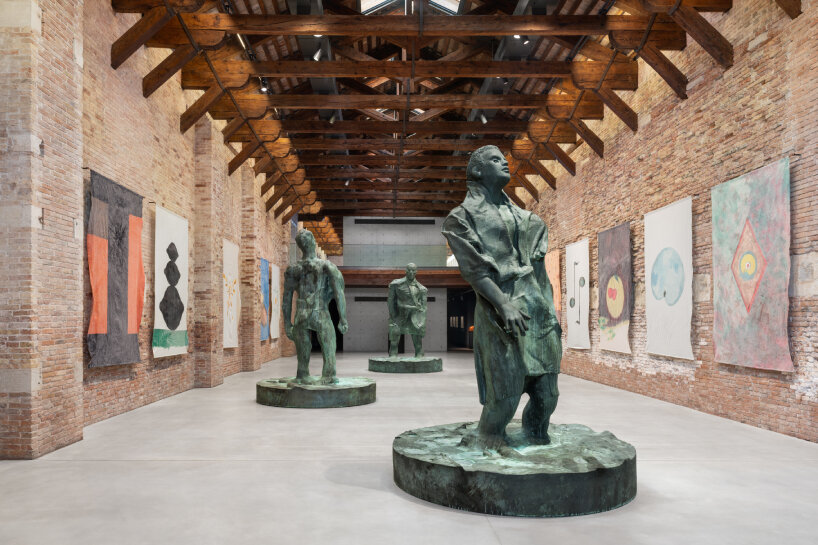
The Difference Between Male and Female Sculptures in Thomas Schütte’s Works
In Thomas Schütte’s works, there are clear differences between male and female sculptures. Each type of character is represented in a way that reflects different concepts and life experiences. Male sculptures typically represent suffering and struggle. On the other hand, female sculptures often appear calm and composed, distanced from the flaws of daily life.
Female Sculptures: Calmness and Serenity
In works such as Glaskopf a, Nr. 10 (2013) and Aluminiunfrau Nr. 17 (2009), the female figures have their eyes closed. This gives an impression of deep contemplation or tranquillity. These figures are depicted either straight or with tilted heads. Their faces are imbued with gentleness and stillness. The artist presents these sculptures without smudging, only using intentional spots and compositions. This enhances the sense of purity and clarity in their features. These female figures reflect an inner calm that contrasts with the physical and emotional struggles shown in the male sculptures.
Diversity of Materials and Sizes in the Exhibition
The exhibition is marked by a significant diversity in the sizes and materials used in Thomas Schütte’s works. This allows him to explore form and subject from different angles. The displayed works reflect a range of styles and techniques. They demonstrate the artist’s unique vision in addressing human forms.
Styles of Representation in Thomas Schütte’s Works
The exhibition showcases the main styles followed by the artist in representing characters, such as:
- Individual or double or fused head sculptures, focusing on the intricate details of facial expressions.
- Permanent figures trapped within the material, reflecting the idea of attachment and stagnation in life.
- Large half-body sculptures reminiscent of ancient Roman portraits, highlighting both physical and symbolic strength.
- Female character sculptures that draw from art history, combining classical ideas with contemporary interpretations.
The Interaction Between Violence and Invention in His Works
Thomas Schütte’s works demonstrate a constant interplay between violence and invention. Violence is embodied not only in powerful physical forms but also in artistic innovation and experimentation. His work moves between personal reflection and theatrical expression. Each piece becomes an intellectual and emotional experience for the viewer.
